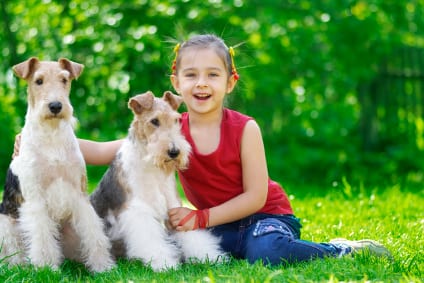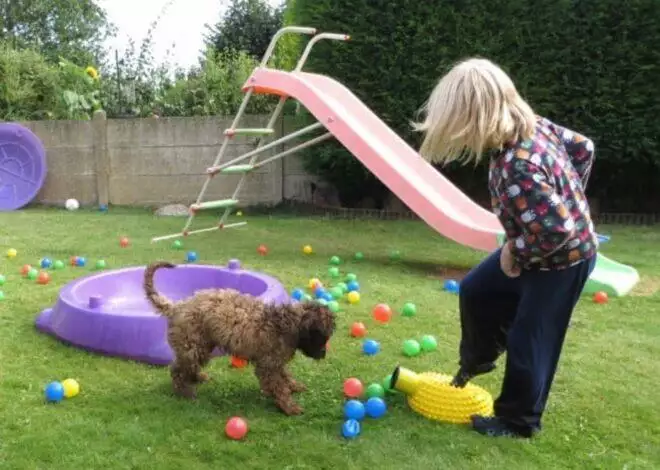 There is nothing sweeter than seeing your child with their new puppy. Right? Well, many new puppy owners would beg to differ. Nice for the first 5 minutes and then the MADNESS begins! Running, chasing, nipping… and I’m not talking about the dog! Teaching your child not to hit or poke the family dog is NOT an easy task, I get it.
There is nothing sweeter than seeing your child with their new puppy. Right? Well, many new puppy owners would beg to differ. Nice for the first 5 minutes and then the MADNESS begins! Running, chasing, nipping… and I’m not talking about the dog! Teaching your child not to hit or poke the family dog is NOT an easy task, I get it.
However, creating the right relationship between a child and the family pet is key. If puppies get mishandled early on by too many children, they begin to learn to protect themselves from the "child monster" who insists on patting, poking and coming at them. Moms can quickly get in the habit of chanting "don’t bother the dog" or "be nice to the puppy" over and over again. Most parents know when their child is super excited about their new puppy, yet they feel naurotically instinctive about the potential dangers that can happen down the line, if children get too carried away with playing the wrong way with the puppy. This unsaid anxiety leaves many Moms feeling helpless.
For years I have helped my clients come up with solutions to protect the puppy and create a fun project for kids! Being organized about integrating the new family dog is really the ticket to successfully empowering everyone, including you!
Try a different approach to chanting and nagging your kids. Encourage a doggy rule project and have your child make his or her OWN rules! Yup, with a little reverse psychology and guidence from you this project and its message goes a long way! These tips are great for kids 5- 8 years old.
Here are a few of my Paws For A Minute™ Quick Tips: Create a Doggy Rule Ritual
Ask your children to help you make up the family doggy rules! Make this a formal fun event and a family affair.
Tips for Moms:
1. Serve ice cream and make it a treat.
2. Write down the rules that you create together.
3. Have your child choose his or her favorite color of marker to decorate the rule page.
4. Frame the rules with a picture of your child and the dog and put it up in a prominent place in the kitchen. Having your child participate in writing the dog rules empowers them in the process of creating the rules. It becomes a positive experience instead of negative. It also allows your child to see the dog as a family member, not a toy. Of course you will still have to play referee, however it’s easier to refer back to the rules that your own child created!





